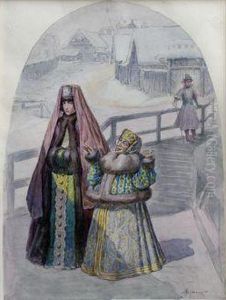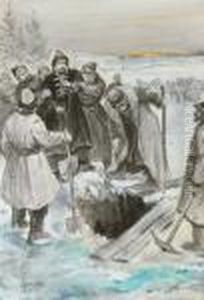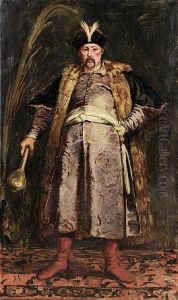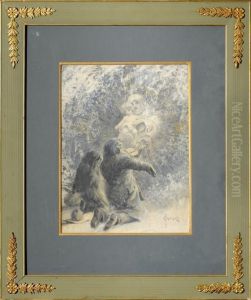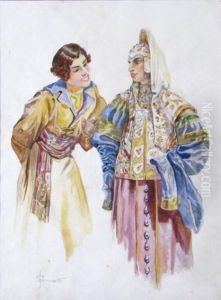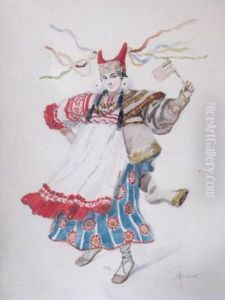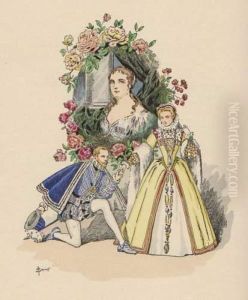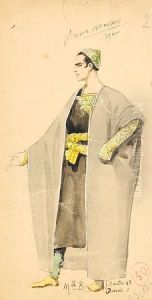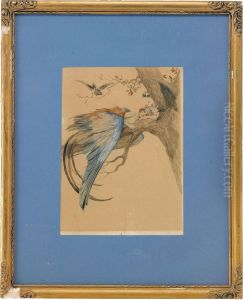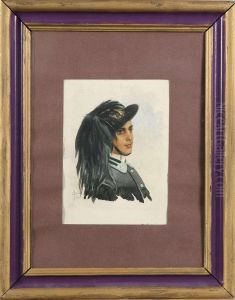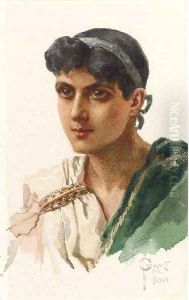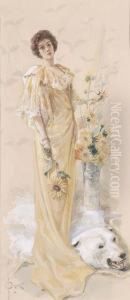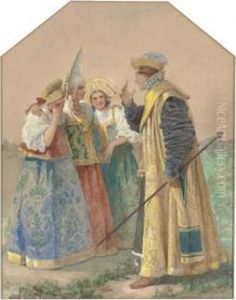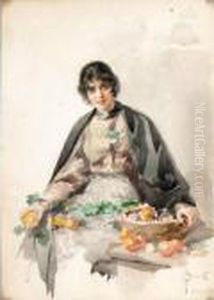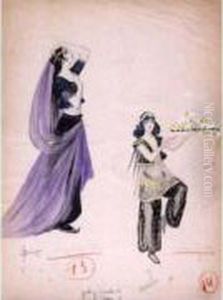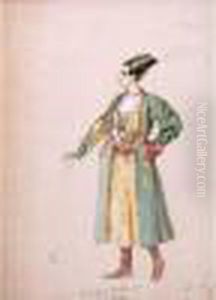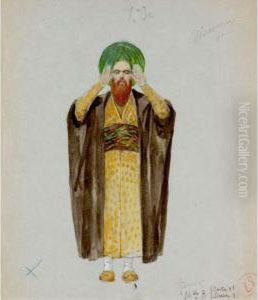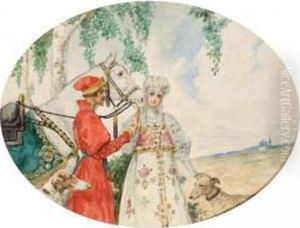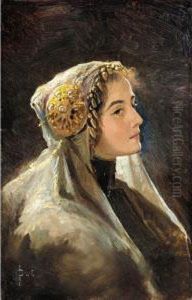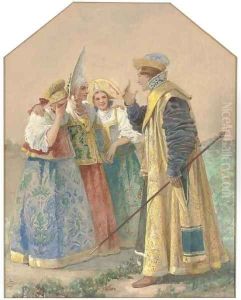Sergei Solomko Paintings
Sergei Vasilievich Solomko was a distinguished Russian painter, watercolorist, and illustrator, born in 1867 in Saint Petersburg, Russia, into a family with noble roots. His artistic journey began at an early age, nurtured by his environment and the cultural milieu of the Russian Empire's capital. Solomko's education in art was comprehensive; he studied at the Saint Petersburg Academy of Arts, one of the most prestigious institutions of its time, which played a crucial role in shaping his technique and artistic vision. After completing his studies, Solomko further honed his skills and explored various artistic avenues across Europe, including significant periods in Munich and Paris, which were vital centers for art in the late 19th and early 20th centuries.
Solomko's work is characterized by a remarkable diversity, encompassing book illustrations, postcards, and easel paintings. He gained considerable acclaim for his illustrations of Russian fairy tales and historical novels, where his ability to blend realism with a romantic flair captured the imagination of both the public and critics. His illustrations often featured scenes from Russian history and folklore, imbued with a sense of nostalgia and national pride, which resonated deeply with the Russian diaspora and those at home during a period of significant social and political change in Russia.
Apart from his contributions to book illustration, Solomko was also known for his exquisite watercolors and portraits, which often depicted the aristocracy and scenes of luxurious, idyllic life. His work in this domain was marked by a delicate touch, attention to detail, and an uncanny ability to capture the fleeting expressions of his subjects, making his portraits highly sought after by the elite of Russian society.
The Russian Revolution of 1917 marked a turning point in Solomko's life and career. Like many of his contemporaries, the upheaval of the revolution and the subsequent civil war forced him to leave Russia. He emigrated first to Finland and later settled in France, where he continued to work until his death in 1928. In emigration, Solomko remained a prolific artist, continuing to produce illustrations, portraits, and paintings that evoked the world he had left behind. His works from this period are often tinged with a sense of loss and nostalgia for the pre-revolutionary past, yet they also reflect the adaptations and transformations of an artist in exile.
Sergei Solomko's legacy is that of an artist who bridged the gap between the old and the new, combining traditional Russian artistic themes with the influences of European art movements. His contribution to the world of illustration and painting remains significant, capturing the essence of a bygone era with elegance and a deep sense of humanity. Despite the tumultuous times he lived through and the changes he witnessed, Solomko's work continues to be celebrated for its beauty, technical skill, and unique perspective on the world of Imperial Russia and its aftermath.
